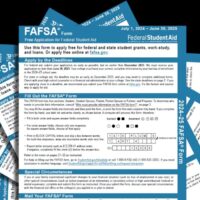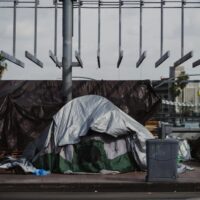Tuesday marked the second-highest day of new coronavirus cases in Kentucky since the pandemic arrived in March, with 1,018 people newly testing positive for the virus.
“We need you to wear a facial covering; 1,018 cases ought to be a wake-up call,” Gov. Andy Beshear said at his daily briefing. “We can’t let this thing get out of control again because maybe we’re tired.”
The governor cautioned that the number of cases is on an upward trajectory in the state, and colder weather will only increase the risk.
“Moving into the fall has the potential to be the most dangerous time we’ve seen in Kentucky, and it doesn’t have to be,” Beshear said. “We know there’s a vaccine in our future, we just have to get to the point where we can prove it’s effective and deploy it to enough people. So are we willing to do what it takes to protect one another, until that point? I think that answer is yes, but we’ve got to prove it.”
He urged parents of school-aged children to stay home for fall break, and strongly suggested that schools not offer one at all.
“If your kids are going back to in-person classes, be careful about where you travel,” he said. “Bringing COVID-19 back to a school can mean the school shutting down.”
Kentucky also changed its color-coded guidance for K-12 schools today, which is based on how many coronavirus cases there are in a community.
Previously, the guidance said schools in red counties, which have 25 or more coronavirus cases per 100,000 people, should only provide virtual learning and should halt all athletics until the county moved back into the yellow, meaning it has 1-10 cases of coronavirus per 100,000 people. Now, it says in-person learning is advisable as long as the county isn’t in the red zone, with a suggestion for schools to check the incidence rate map on Thursday nights to make decisions for the following week.
“It is not our intent to strand people in the wrong categorization,” Health Commissioner Steven Stack said. “The tool is intended to identify when the disease is particularly active in your community.”
Stack also encouraged patience as schools, parents and other stakeholders learn to navigate the new K-12 school COVID-19 dashboard, which was launched yesterday. The dashboard shows the most up-to-date number of coronavirus cases in each school and was created for parents and school officials to use as they make weekly decisions about whether to offer in-person classes or not. He said of the 2,000 private and public schools in the commonwealth, about 1,300 have submitted data.
“You should be able to find your school by name and be able to find the data that they reported. If you don’t find data, I encourage you to call the school and inquire, and work in partnership with them,” Stack said.
Stack urged Kentuckians to take the steps that are proven to control the spread of the virus: wear a mask, social distance, get tested, and don’t leave home if you are sick. He noted that after a three-month plateau, the state is seeing an increase in cases that Kentucky “can’t afford to let get out of control.”
“If we ignore the rules, someone’s going to get bitten, and they’re going to get bitten bad. Everywhere that people got sloppy, the virus got out of control and took more lives,” Stack said. “So please, take this seriously.”
There’s also increasing evidence that COVID-19 will have long-lasting effects on about 10 to 15 percent of those who contract it. Even for those without severe COVID-19 symptoms, Stack said a portion report brain fog, shortness of breath and chronic fatigue, “There’s a lot we don’t know yet,” he said.
Stack also urged Kentuckians to get a flu shot.
“It’ll be impossible to know who has COVID-19, or who has the flu,” Stack said. “People who are uncertain [of] their status, they’re going to be subjected to a lot more needless worry and additional testing.”
The share of people testing positive for the virus in the last seven days in Kentucky was 4.24%.
In other COVID-19 news Tuesday:
- Of today’s new cases, 157 are under 18.
- Kentucky has 589 people in the hospital due to the novel coronavirus; 129 are in intensive care and 81 are on a ventilator.
- Beshear reported eight more deaths, raising the state’s toll to 1,170. The deaths reported Tuesday include a 93-year-old woman from Bell County; an 86-year-old man from Bullitt County; a 77-year-old man and an 85-year-old woman from Floyd County; a 71-year-old woman from Henderson County; a 68-year-old man from Hickman County; and two women, 86 and 87, from Kenton County.
- Lt. Gov. Jacqueline Coleman said the state has enough personal protective equipment stockpiled to handle a four-month surge of cases.
- Beshear said the state would be receiving its share of the 100 million rapid coronavirus tests through the end of the year and was working on a plan for how to distribute them. The Abbott BinaxNOW diagnostic test is the only FDA-authorized antigen, rapid, point-of-care test that doesn’t require an instrument and produces test results in 15 minutes, and costs $5, Becker’s Hospital Review reports. The Associated Press reports on the downsides of the tests: “They are less accurate, and positive results often need to be confirmed with higher-grade lab tests. Additionally, because the tests are often performed outside the health care system, state officials have warned that many tests are going unreported. That could lead to under-counts of new cases, skewing government data needed to track the virus.”
- Nearly 50 cases of the virus traced back to a church wedding at Lighthouse Baptist Church in Knott County, Madison Pergrem reports for WYMT. “From the time this started until now we had outdoor services we did online services. We looked for the ways to do things right but the one time that we dropped the ball, the one time that we went away from the guidelines is all it took,” Pastor Jamie Hughes told Pergrem from his hospital room after being diagnosed with COVID-19. “Probably not a family in our church that right now that does not have someone being affected by this.” His final message: “Regardless of what you think or how you feel we want to encourage people [to] keep wearing the mask and keep social distancing.”
- Kevin Wheatley of Louisville’s WDRB talked to a number of school officials who will be responsible for determining targeted closures for their school districts, with district leaders telling him they will consider the state’s color-coded COVID-19 incidence rate map, but will rely heavily on school-based coronavirus cases to make those decisions.
- The Centers for Disease Control and Prevention’s Morbiditiy and Mortality Weekly Report shows a recent increase in corinavirus cases among 18-to-22-year-olds. The report says between Aug. 2 to Sept. 5, cases in this age group increased 55%, and the rise was not solely attributed to increased testing.
- The global COVID-19 death toll surpassed 1 million Sept. 28, with U.S. deaths accounting for more than 20 percent of the total, Becker’s Hospital Review reports.
- There is much discussion about herd immunity and COVID-19 in the news these days, most recently coming to the forefront in a heated debate between Sen. Rand Paul and Dr. Anthony Fauci, the top U.S. infectious-disease official. Aneri Pattani with Kaiser Health News breaks down the facts about herd immunity, calling it a risky strategy: “The bottom line, medical experts say, is that natural herd immunity is an uncertain strategy, and attempts to pursue it could result in a slew of unnecessary deaths. A vaccine, whenever one becomes available, would offer a safer route to community-wide protection.”






